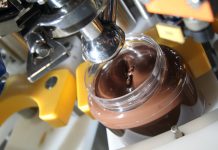The growing demand for functional products is continuously stimulated by modern consumers, who are aware of the relationship existing between diet and health. In particular, these concerns are associated with the reduction of fat consumption due to disease risk factors, like diabetes, obesity, several cardiovascular failures and forms of cancer.
The proposed methods to reduce the fat content in food, as for instance cookies, include, for example: the use of mimetics, i.e. substances that imitate the sensory properties of fats and consisting of proteins or carbohydrates; replacement of hydrogenated or saturated fats with vegetable oils or, recently, the use of oil-in-water emulsions. In this context, a recent study by a group of Serbian researchers (Dapčević Hadnađev et al., 2015), investigated the effect of total replacement of vegetable fats with a system consisting of starch sodium octenyl succinate (OSA starch) (stabilized) oil-in-water emulsions in wheat flour cookies. Vegetable fats were replaced also with unstructured sunflower oil (i.e. not in emulsion).
In particular, these effects were determined by measuring rheological properties, textural properties, moisture, colour, and sensory attributes of cookies. Results showed that the vegetable fat replacement with unstructured oil contributed to decrease the elastic modulus of dough and to increase cookies firmness, a reduction of the diameter and an overall worsening of the sensory acceptability of the product. On the contrary, cookies containing OSA starch emulsion, expressed higher dough strength, higher moisture and surface properties. Even in this case, however, smaller diameter was observed next to higher firmness in comparison to traditional cookies. In conclusion, the authors state that, although all the cookies were sensory acceptable, additional investigations are required to improve the sensory characteristics, like surface properties and chewiness.
References. Dapčević Hadnađev et al., Journal of Food Engineering, 167, 2015, 133-138




